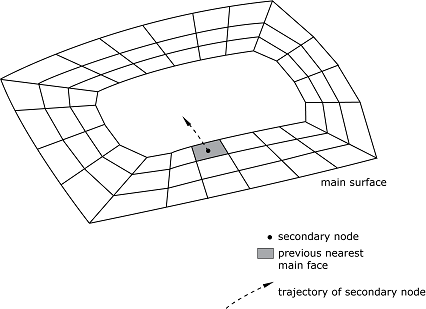Scaling Default Penalty Stiffnesses
If you use the penalty method to enforce contact constraints in a contact pair (see Contact Constraint Enforcement Methods in Abaqus/Explicit), Abaqus/Explicit resists penetrations between surfaces by applying a “spring” stiffness to penetrating nodes. The “spring” stiffness that relates the contact force to the penetration distance is chosen automatically by Abaqus/Explicit, such that the effect on the time increment is minimal yet the allowed penetration is not significant in most analyses. Significant penetrations may develop in an analysis if any of the following factors are present:
Displacement-controlled loading
Materials at the contact interface that are purely elastic or stiffen with deformation
Deformable elements (especially membrane and surface elements) that have relatively little mass of their own and are constrained via methods other than boundary conditions (for example, connectors) involved in contact
Rigid bodies that have relatively little mass or rotary inertia of their own and are constrained via methods other than boundary conditions (for example, connectors) involved in contact
See The Hertz contact problem for an example in which the first two of these factors combine such that the contact penetrations with the default penalty stiffness are significant.
You can specify a scale factor by which to modify penalty stiffnesses for specified contact pairs. This scaling may affect the automatic time incrementation. Use of a large scale factor is likely to increase the computational time required for an analysis because of the reduction in the time increment that is necessary to maintain numerical stability (see Contact Constraint Enforcement Methods in Abaqus/Explicit for further discussion).
